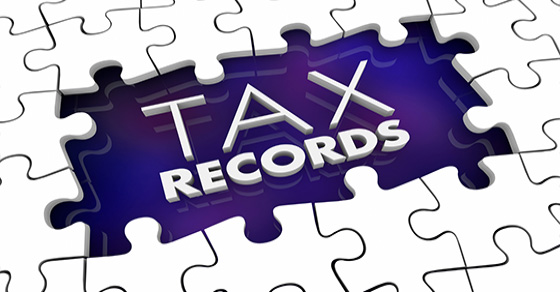Recent Articles
Navigating the tax landscape when donating works of art to charity
- Details
- Published: 07 October 2021 07 October 2021

If you own a valuable piece of art, or other property, you may wonder how much of a tax deduction you could get by donating it to charity.
The answer to that question can be complex because several different tax rules may come into play with such contributions. A charitable contribution of a work of art is subject to reduction if the charity’s use of the work of art is unrelated to the purpose or function that’s the basis for its qualification as a tax-exempt organization. The reduction equals the amount of capital gain you’d have realized had you sold the property instead of giving it to charity.
For example, let’s say you bought a painting years ago for $10,000 that’s now worth $20,000. You contribute it to a hospital. Your deduction is limited to $10,000 because the hospital’s use of the painting is unrelated to its charitable function, and you’d have a $10,000 long-term capital gain if you sold it. What if you donate the painting to an art museum? In that case, your deduction is $20,000.
Substantiation requirements
One or more substantiation rules may apply when donating art. First, if you claim a deduction of less than $250, you must get and keep a receipt from the organization and keep written records for each item contributed.
If you claim a deduction of $250 to $500, you must get and keep an acknowledgment of your contribution from the charity. It must state whether the organization gave you any goods or services in return for your contribution and include a description and good faith estimate of the value of any goods or services given.
If you claim a deduction in excess of $500, but not over $5,000, in addition to getting an acknowledgment, you must maintain written records that include information about how and when you obtained the property and its cost basis. You must also complete an IRS form and attach it to your tax return.
If the claimed value of the property exceeds $5,000, in addition to an acknowledgment, you must also have a qualified appraisal of the property. This is an appraisal that was done by a qualified appraiser no more than 60 days before the contribution date and meets numerous other requirements. You include information about these donations on an IRS form filed with your tax return.
If your total deduction for art is $20,000 or more, you must attach a copy of the signed appraisal. If an item is valued at $20,000 or more, the IRS may request a photo. If an art item has been appraised at $50,000 or more, you can ask the IRS to issue a “Statement of Value” that can be used to substantiate the value.
Percentage limitations
In addition, your deduction may be limited to 20%, 30%, 50%, or 60% of your contribution base, which usually is your adjusted gross income. The percentage varies depending on the year the contribution is made, the type of organization, and whether the deduction of the artwork had to be reduced because of the unrelated use rule explained above. The amount not deductible on account of a ceiling may be deductible in a later year under carryover rules.
Other rules may apply
Donors sometimes make gifts of partial interests in a work of art. Special requirements apply to these donations. If you’d like to discuss any of these rules, please contact us.
© 2021
The tax score of winning
- Details
- Published: 30 September 2021 30 September 2021

Studies have found that more people are engaging in online gambling and sports betting since the pandemic began. And there are still more traditional ways to gamble and play the lottery. If you’re lucky enough to win, be aware that tax consequences go along with your good fortune.
Review the tax rules
Whether you win online, at a casino, a bingo hall, a fantasy sports event or elsewhere, you must report 100% of your winnings as taxable income. They’re reported on the “Other income” line of your 1040 tax return. To measure your winnings on a particular wager, use the net gain. For example, if a $30 bet at the racetrack turns into a $110 win, you’ve won $80, not $110.
You must separately keep track of losses. They’re deductible, but only as itemized deductions. Therefore, if you don’t itemize and take the standard deduction, you can’t deduct gambling losses. In addition, gambling losses are only deductible up to the amount of gambling winnings. Therefore, you can use losses to “wipe out” gambling income but you can’t show a gambling tax loss.
Maintain good records of your losses during the year. Keep a diary in which you indicate the date, place, amount and type of loss, as well as the names of anyone who was with you. Save all documentation, such as checks or credit slips.
Hitting a lottery jackpot
The odds of winning the lottery are slim. But if you don’t follow the tax rules after winning, the chances of hearing from the IRS are much higher.
Lottery winnings are taxable. This is the case for cash prizes and for the fair market value of any noncash prizes, such as a car or vacation. Depending on your other income and the amount of your winnings, your federal tax rate may be as high as 37%. You may also be subject to state income tax.
You report lottery winnings as income in the year, or years, you actually receive them. In the case of noncash prizes, this would be the year the prize is received. With cash, if you take the winnings in annual installments, you only report each year’s installment as income for that year.
If you win more than $5,000 in the lottery or certain types of gambling, 24% must be withheld for federal tax purposes. You’ll receive a Form W-2G from the payer showing the amount paid to you and the federal tax withheld. (The payer also sends this information to the IRS.) If state tax withholding is withheld, that amount may also be shown on Form W-2G.
Since the federal tax rate can currently be up to 37%, which is well above the 24% withheld, the withholding may not be enough to cover your federal tax bill. Therefore, you may have to make estimated tax payments — and you may be assessed a penalty if you fail to do so. In addition, you may be required to make state and local estimated tax payments.
Talk with us
If you’re fortunate enough to win a sizable amount of money, there are other issues to consider, including estate planning. This article only covers the basic tax rules. Different rules apply to people who qualify as professional gamblers. Contact us with questions. We can help you minimize taxes and stay in compliance with all requirements.
What tax records can you throw away?
- Details
- Published: 12 October 2020 12 October 2020

Oct. 15 is the deadline for individual taxpayers who extended their 2019 tax returns. If you’re finally done filing last year’s return, you might wonder: Which tax records can you toss once you’re done? Now is a good time to go through old tax records and see what you can discard. A common rule of thumb is to keep tax records for at least six years from filing, after which the IRS generally no longer can audit your return or assess additional taxes, even if your income was understated. But hang on to certain records longer including the tax returns themselves, W-2 forms and records related to real estate, investments and retirement accounts.
Consider all the tax consequences before making gifts to loved ones
- Details
- Published: 14 December 2018 14 December 2018

Many people choose to pass assets to the next generation during life, whether to reduce the size of their taxable estate, to help out family members or simply to see their loved ones enjoy the gifts. If you’re considering lifetime gifts, be aware that which assets you give can affect the tax consequences. For example, to minimize your heir’s income tax, gift property that hasn’t appreciated significantly while you’ve owned it. The heir can sell the property at a minimal income tax cost. Contact us to discuss the tax consequences of any gifts you’d like to make.
529 plans offer two tax-advantaged education funding options
- Details
- Published: 30 November 2018 30 November 2018

Section 529 plans are a popular education-funding tool because of tax and other benefits. Two types are available: 1) prepaid tuition plans, and 2) savings plans. A prepaid tuition plan guarantees tuition regardless of its cost when the child attends the school. A savings plan can fund expenses beyond college tuition on a tax-free basis. The TCJA expands the definition of qualified expenses to generally include elementary and secondary school tuition. However, tax-free distributions used for such tuition are limited to $10,000 per year. Contact us with questions.
Play your tax cards right with gambling wins and losses
- Details
- Published: 14 September 2018 14 September 2018

If you gamble, play your tax cards right with your wins and losses. Changes under the TCJA could have an impact. You must report 100% of your winnings as taxable income, but you might pay a lower rate on them because of TCJA rate reductions. Gambling losses are still allowed as an itemized deduction (up to your winnings for the year), but, with the standard deduction nearly doubled under the TCJA, you might no longer benefit from itemizing. Finally, “professional” gamblers face tighter limits on deducting their gambling expenses. Contact us if you have questions.
Close-up on the new QBI deduction’s wage limit
- Details
- Published: 13 August 2018 13 August 2018

The TCJA allows qualifying non-corporate owners of pass-through entities to deduct as much as 20% of qualified business income. But once taxable income exceeds $315,000 for married couples filing jointly or $157,500 for other filers, a wage limit begins to phase in. When the limit is fully phased in, the deduction generally can’t exceed the greater of the owner’s share of a) 50% of the amount of W-2 wages paid to employees during the tax year, or b) the sum of 25% of W-2 wages plus 2.5% of the cost of qualified business property. Contact us to learn more.
2 tax credits just for small businesses may reduce your 2017 and 2018 tax bills
- Details
- Published: 30 January 2018 30 January 2018

Tax credits reduce tax liability dollar-for-dollar, potentially making them more valuable than deductions, which reduce only the amount of income subject to tax. Maximizing available credits is especially important now that the Tax Cuts and Jobs Act has reduced or eliminated some tax breaks for businesses. Two still-available tax credits are especially for small businesses that provide certain employee benefits.
New tax law gives pass-through businesses a valuable deduction
- Details
- Published: 23 January 2018 23 January 2018

Although the drop of the corporate tax rate from a top rate of 35% to a flat rate of 21% may be one of the most talked about provisions of the Tax Cuts and Jobs Act (TCJA), C corporations aren’t the only type of entity significantly benefiting from the new law. Owners of noncorporate “pass-through” entities may see some major — albeit temporary — relief in the form of a new deduction for a portion of qualified business income (QBI).
Meals, entertainment and transportation may cost businesses more under the TCJA
- Details
- Published: 23 January 2018 23 January 2018

Along with tax rate reductions and a new deduction for pass-through qualified business income, the new tax law brings the reduction or elimination of tax deductions for certain business expenses. Two expense areas where the Tax Cuts and Jobs Act (TCJA) changes the rules — and not to businesses’ benefit — are meals/entertainment and transportation. In effect, the reduced tax benefits will mean these expenses are more costly to a business’s bottom line.





